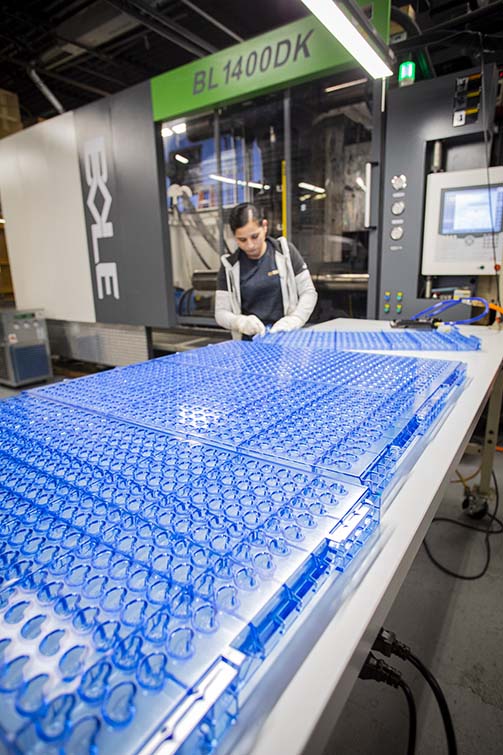In laboratories, pharmacies, and healthcare facilities, the storage and transportation of vials are crucial tasks. Vials contain sensitive substances like medications, reagents, or biological samples, demanding optimal protection and organization. Plastic trays play a pivotal role in safeguarding these vials, ensuring their integrity and ease of handling. However, not all plastic trays are created equal when it comes to vial storage. Let’s delve into the world of plastics and explore the best options for vial trays.
Understanding the Importance of Plastic Trays for Vials
The significance of proper vial storage cannot be overstated. Vials often house delicate substances that can be sensitive to light, temperature, or physical impact. They might contain pharmaceuticals that need to remain sterile or biological specimens requiring airtight and secure storage. This is where the choice of plastic trays becomes critical—selecting the right material ensures the safety and integrity of the vials they hold.
Factors to Consider When Choosing Plastic Trays
- Material: Plastics commonly used for vial trays include polystyrene, polypropylene, PVC, and PETG. Each material has distinct properties affecting durability, chemical resistance, and compatibility with sterilization methods.
- Chemical Compatibility: Vial trays must resist chemical interactions with the substances they hold. Polypropylene, for instance, offers excellent resistance to many chemicals, making it suitable for a wide range of vial types.
- Sterilization Methods: Depending on the setting, trays might undergo autoclaving, gamma irradiation, or other sterilization methods. The chosen plastic should withstand these processes without compromising its structural integrity.
- Durability: The ability of the plastic to endure impacts, temperature variations, and repetitive use is crucial. For long-term use, a sturdy material like PETG might be preferable due to its impact resistance and durability.
- Clarity and Visibility: Transparent or translucent trays aid in easy identification and inspection of vials without requiring their removal, simplifying inventory management.

The Best Plastic Options for Vial Trays
- Polystyrene: Polystyrene is known for its clarity and cost-effectiveness. It offers good chemical resistance, making it suitable for many applications. However, its vulnerability to certain solvents limits its use in scenarios where exposure to aggressive chemicals is probable.
- Polypropylene: Polypropylene is a widely favored choice due to its excellent chemical resistance, durability, and compatibility with sterilization methods. It maintains its structural integrity even after multiple sterilization cycles, making it ideal for demanding laboratory environments.
- PVC (Polyvinyl Chloride): PVC offers good chemical resistance and is relatively inexpensive. However, its use might be limited due to concerns about plasticizers and their potential interaction with certain substances, especially over prolonged periods.
- PETG (Polyethylene Terephthalate Glycol): PETG combines transparency with exceptional durability. Its resistance to impact and shattering makes it suitable for rugged applications. PETG also withstands multiple sterilization cycles without compromising its structural integrity, ensuring long-term reliability.
Conclusion
Selecting the right plastic for vial trays involves a careful consideration of factors such as chemical compatibility, sterilization methods, durability, and visibility. While polystyrene and PVC offer certain advantages, polypropylene and PETG emerge as top choices due to their superior chemical resistance, durability, and compatibility with various sterilization techniques.
In the realm of vial storage and handling, the plastic tray might seem like a minor detail, but it plays a pivotal role in maintaining the integrity and safety of the substances they hold. Investing in the right plastic trays ensures not just efficient organization but also safeguards the invaluable contents of these vials. When it comes to choosing the best plastic trays for vials, it’s not just about the plastic—it’s about protecting what’s inside.
Check out our product brochure for more information

